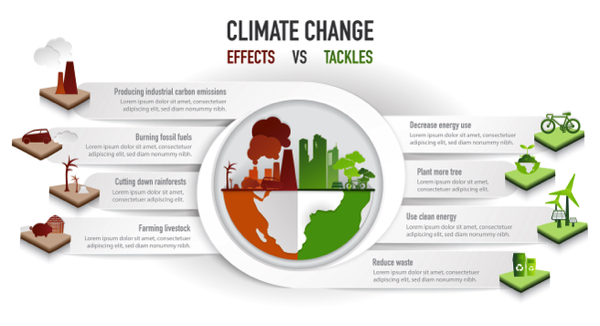 Parler
Parler Gab
Gab
- New research uncovers dynamic changes in Earth's inner core, challenging long-held assumptions about its structure and behavior.
- Earth's inner core is not only slowing its rotation but also changing shape, according to a study published in Nature.
- Seismic waves from earthquakes reveal that the core's surface is dynamic, with subtle shifts occurring over short periods.
- The findings could reshape our understanding of Earth's magnetic field and the planet's deep interior dynamics.
A dynamic core: slowing rotation and shifting shape
Deep beneath our feet, Earth's inner core is undergoing changes that defy traditional scientific understanding. A study published on February 10 in the journal Nature reveals that the inner core, a solid ball of iron and nickel, is not only slowing its rotation but also experiencing shape-shifting at its surface. Using seismic waves from earthquakes, researchers have uncovered evidence that the core's outermost layer is dynamic, with subtle changes occurring over time. These findings, led by seismologist John Vidale of the University of Southern California Dornsife, challenge long-held assumptions about the core's stability and offer new insights into the forces shaping our planet's deepest interior. For decades, scientists have debated whether Earth's inner core rotates independently of the planet's outer layers. In a 2023 study co-authored by Vidale, researchers found that the inner core had been rotating faster than the rest of the planet until around 2010, when it began to slow. Now, it lags behind Earth's overall rotation. The latest research builds on this discovery, revealing that the core's surface is not static but dynamic. By analyzing seismic waves from 168 pairs of earthquakes originating in the South Sandwich Islands and detected in the Americas, the team observed subtle differences in waves that skimmed the core's surface. These differences suggest that the core's topography is changing, possibly due to the churning motion of the molten outer core. "The most likely thing is the flow in the outer core is stirring up the outermost inner core a little bit and changing the topography," Vidale told Live Science. He estimates that these changes could involve movements of hundreds of meters to a few kilometers, though the exact dimensions remain unclear.The core's mysterious structure: solid, mushy or liquid?
The inner core, long thought to be a solid ball of iron and nickel, may not be as rigid as previously believed. Recent research published in Physics of the Earth and Planetary Interiors suggests that the core's firmness varies, with pockets of liquid and semisolid "mushy" iron near its surface. Geophysicist Rhett Butler of the Hawai'i Institute of Geophysics and Planetology led this study, which began with a puzzling observation: seismic shear waves, which should pass through a solid core, were being deflected in certain areas. "When you're in this business, you've got to match the data," Butler said. The team concluded that the core's structure is more complex than a simple solid sphere, with regions of varying consistency. Jessica Irving, a seismologist at the University of Bristol, described the findings as revealing "a whole new hidden world." She noted that the core's complexity could have significant implications for understanding Earth's magnetic field, which is generated by the swirling liquid outer core but influenced by the inner core's structure.Earth's magnetic field and planetary history
The inner core's behavior is not just an academic curiosity; it plays a crucial role in Earth's magnetic field, which protects the planet from harmful solar radiation. The solidification of the inner core drives heat movement in the outer core, creating the dynamo effect that generates the magnetic field. Bruce Buffett, a geoscientist at the University of California, Berkeley, emphasized the importance of understanding the core's dynamics. "The hope is we might be able to use the texture of the inner core and its structure and dynamics to say something about the history of the dynamics of the deepest part of the planet," he told Live Science. The new findings also align with other geophysical observations, such as changes in the length of day and the magnetic field, suggesting a multidecadal oscillation in the core's rotation. This cyclical pattern, with turning points in the early 1970s and around 2010, hints at dynamic interactions between Earth's layers.A journey to the center of the Earth
Earth's inner core remains one of the planet's most enigmatic features, a realm of immense pressure and heat that is impossible to explore directly. Yet, through the echoes of earthquakes, scientists are piecing together a picture of a dynamic and ever-changing world. As Vidale and his colleagues continue to probe the core's secrets, they are uncovering surprises that challenge our understanding of Earth's interior. From its slowing rotation to its shape-shifting surface, the inner core is proving to be far more complex than a simple solid sphere. In the words of Jessica Irving, "We're finding a whole new hidden world." And as this hidden world reveals itself, it promises to deepen our understanding of the forces that shape our planet—and perhaps even our place in the cosmos. Sources include: LiveScience.com Nature.com LiveScience.comJeffrey Goodman’s “The Comets of God” explores connection between the BIBLE and the COSMOS
By Kevin Hughes // Share
Thieves oil: A centuries-old remedy with modern day relevance
By Lance D Johnson // Share
Bilberries: The wild blueberry powerhouse of antioxidants and flavor
By Zoey Sky // Share
36 Immune benefits of probiotics
By News Editors // Share
Elon Musk’s xAI unleashes Grok 3: The smartest AI on Earth?
By Willow Tohi // Share
Governments continue to obscure COVID-19 vaccine data amid rising concerns over excess deaths
By patricklewis // Share
Tech giant Microsoft backs EXTINCTION with its support of carbon capture programs
By ramontomeydw // Share
Germany to resume arms exports to Israel despite repeated ceasefire violations
By isabelle // Share










